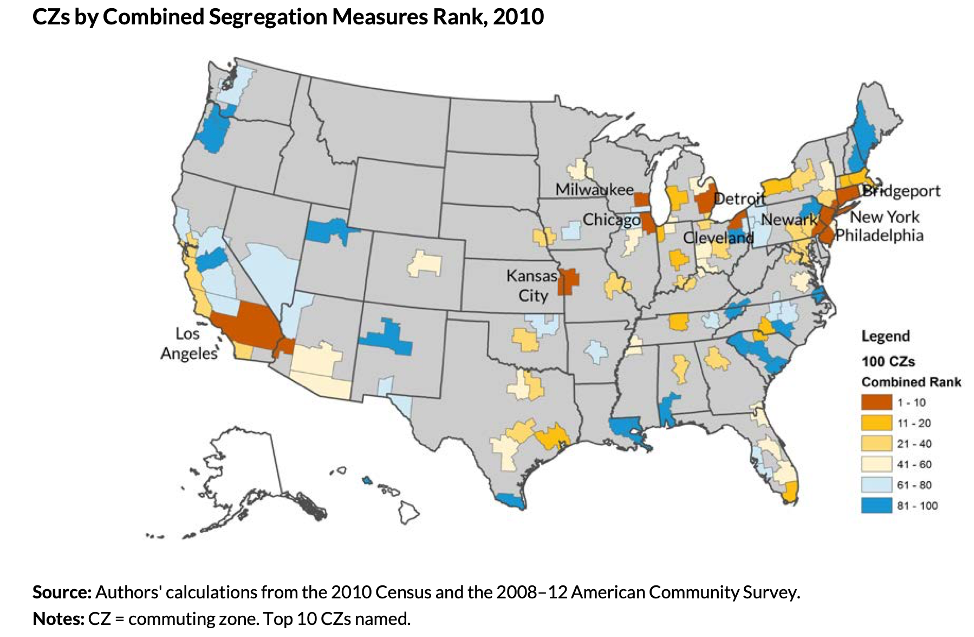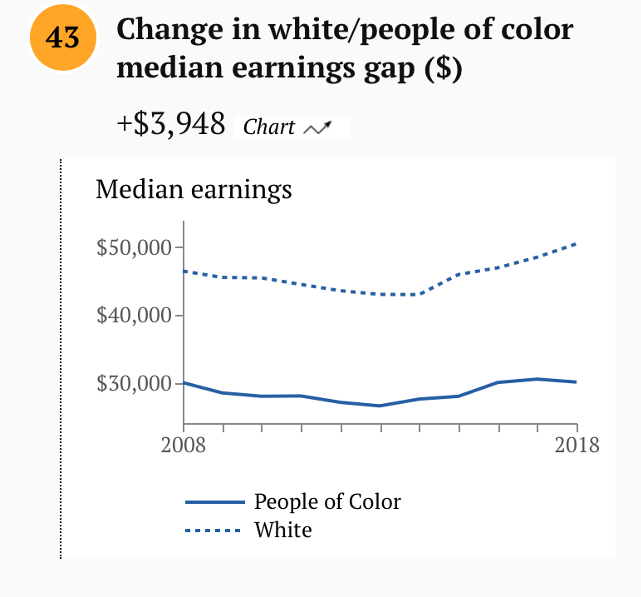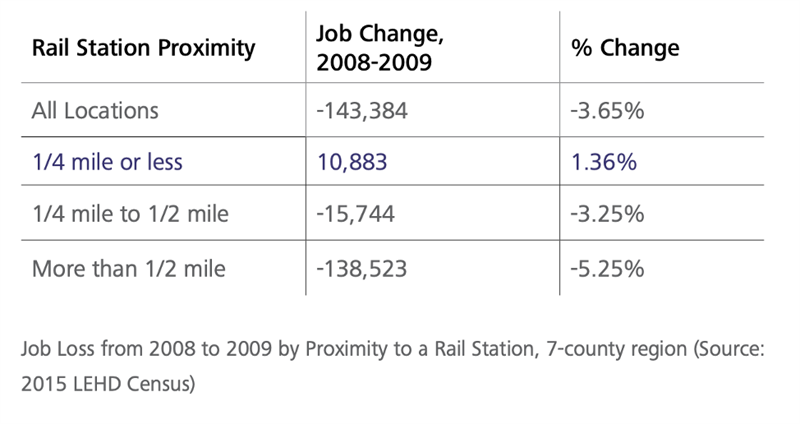 By Daniel Cooper and Shehara Waas, Research Manager
By Daniel Cooper and Shehara Waas, Research Manager - March 25, 2020
In this time of crisis we need to think about the ways our policies and economic systems can better support those who are most vulnerable. The coronavirus is reshaping how we live, work, and interact. To some extent, we are all impacted by the pandemic and the necessary business closures, but some communities in the Chicago region are undoubtedly harder hit. Over 3.3 million people just filed for unemployment, the biggest jump in the history of the nation. We do not yet know how long this shutdown may last, or how soon businesses will bounce back, but one thing is certain: our existing patterns of inequality are likely to get much worse unless we make addressing them the number one priority in our policy responses.
Segregation and Inequality Make the Chicago Region More Vulnerable
 *Source: MPC / Urban Institute Cost of Segregation Report, 2017
*Source: MPC / Urban Institute Cost of Segregation Report, 2017
The Chicago region has the nation’s fifth highest combined racial and economic segregation ranking. This may seem like a statistic that we all have heard, but it is of critical importance now because, although many will suffer as a result of this crisis, people of color are particularly vulnerable. And this means that our policy responses must be swift and equitable, or segregation and inequality will only be exacerbated. The earnings gap between people of color and white people has already been getting wider over the last five years.

*Image taken from Brookings Institution Metro Monitor 2020
In March 2020, our colleagues at the Brookings Institution released rankings of metro areas. The chart above from this recent report shows that the Chicago region near the bottom when it came to closing the earnings gap between people of color and whites. This was before our current crisis, meaning that there is going to be even more downward pressure on the earnings of people of color.
Patterns of Segregation and Inequality Heighten Risks of Economic Shocks. And it Starts with Housing

*Source: MPC, using 2018 American Community Survey Data
Many homeowners are already paying more than the recommended maximum of 30% of their household income toward a mortgage. This is particularly true for Chicago's South and West Side communities and for Cook County's southern suburbs. Many of the same households which suffered the greatest in the mortgage crisis during the last decade are most vulnerable to an income shock and falling behind on their mortgage. Black households are more likely to have received a subprime mortgage and experienced a foreclosure in the last crisis. Many majority Black communities have higher shares of cost burdened households.
Cook County Treasurer Maria Pappas has announced a delay in that county’s annual sale of tax delinquent properties until further notice. This is an excellent first step to protect families experiencing financial difficulty, but it is likely that those families will need much more support.
Many People Work in Sectors That Pay Hourly Wages, Particularly Latinx Employees
In the City of Chicago alone, there are approximately 1.25 million workers employed in sectors that are likely to pay hourly wages (including retail, accommodation and food service, manufacturing, transportation and warehouse, other service-related, construction, and arts and entertainment). These sectors represent nearly 60% of all Chicago workers, and such jobs are likely to be the most insecure, least likely to have any paid sick days, and most vulnerable to loss of income either temporarily or permanently in our current crisis.
Workers most likely to be paid hourly wages are scattered across the city, and are in every community.

*MPC, 2017 Longitudinal Employer Household Dynamics data, job sector by worker home location
There are higher percentages of these workers in Chicago’s Northwest and Southwest Sides, indicating that Latino workers, and the communities they live in, are particularly vulnerable.
Workers are Vulnerable When Jobs Do Not Provide Paid Sick Days
The chart above shows that a frighteningly low percentage of U.S. workers in the lowest percentiles of earners do not have paid sick or personal leave (these are expected to be similar for Chicago and the region). By some estimates, over 80% of restaurant workers do not have paid sick days. Black and Latinx workers are also disproportionately impacted. These vulnerable workers are more likely to continue working even when sick because there simply is no other option for their families to cover household costs.
The One-Two Punch of Health Inequities for Low-Income and Minority Households
Legend
*Source: MPC, ceated using ArcGIS online: 1American Community Survey 2014-2018 estimates: percentage minority residents by census tract (all persons except white, non-Hispanic), sourced from the CDC’s Social Vulnerability Index; 2 CDC’s Behavioral Risk Factor Surveillance System, 2013: reported rates of adult asthma, sourced from PolicyMap
Just one of many reasons a racialequity lens is needed in COVID-19 response: when MPC mapped the prevalence of adult asthma rates1 across Chicago's census tracts, we found higher rates concentrated in majority-minority neighborhoods (i.e. areas with a higher percentage of minority residents2, as compared to white residents)
Family Budgets Are Stressed Further Even by Basic Utility Bills
Even something as basic as a water bill is likely to bring additional financial challenges to families struggling with a cascade of problems. The majority of municipalities in the Chicago region have at least one low-income neighborhood where families face burdens to pay the water and sewer bill.

*Source: MPC / Elevate Engergy / Illinois-Indiana Sea Grant Water Affordability in Northeast Illinois report
Our coordinated policy response guiding metropolitan Chicago's recovery must be multi-pronged, so that families have economic assistance and a cushion for basic services like water.
Remember Lessons From the Last Recession
One thing we learned from the last recession: That Jobs Located Near Transit are More Resilient to Economic Shocks
 *Source: MPC Transit Means Business report, 2018
*Source: MPC Transit Means Business report, 2018
During the Great Recession in 2008-2009, the 7-county region lost nearly 150,000 jobs, but that wasn’t the trend in areas well-served by transit. Jobs actually continued to grow a modest pace within ¼ mile of a rail station. If we are headed for another recession, we need to do everything we can to ensure our transit system continues to serve workers well.
There is much more we can learn from our last recession--both how it reinforced vunerability and inequality, and how resilience was built. MPC will track how the crisis continues to unfold and use data to provide perspective on how we can best mobilize institutions and communities to support the most vulnerable families, and build resiliency to chart a recovery for everyone.